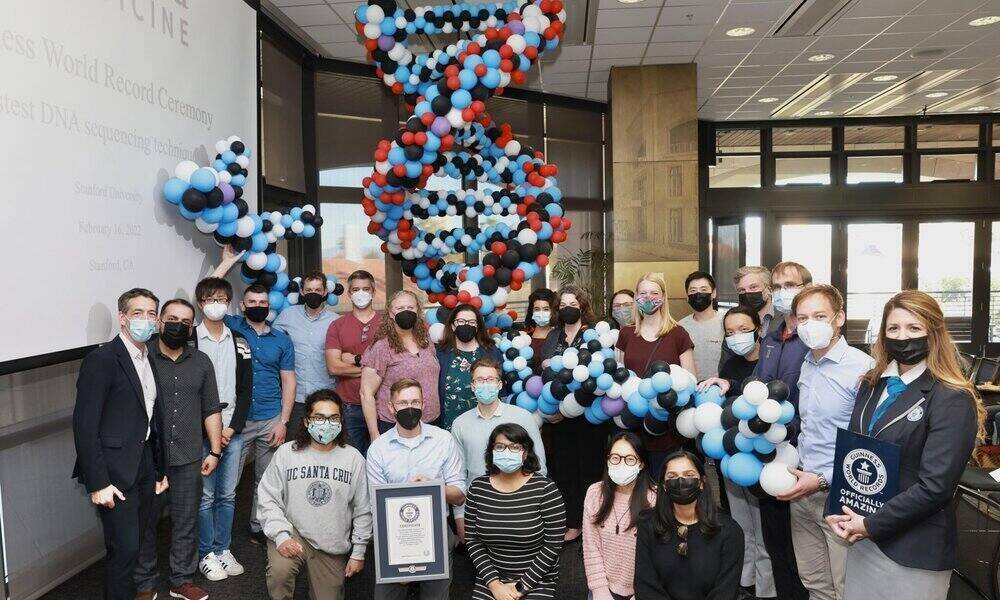
A team of researchers from Stanford University has achieved, thanks to the support of Artificial Intelligence, break the Guinness World Record for DNA sequencing. For this he has used a technique that uses Artificial Intelligence to accelerate the speed of the workload associated with DNA sequencing.
This research, which has led by Euan Ashley Professor of Medicine, Genetics and Biomedical Data Science, has been developed at the Stanford University School of Medicine. To carry it out, the team has had the collaboration of Nvidia, Oxford Nanopore Technologies, Google, Baylor College of Medicine, and the University of California. Thanks to it, DNA sequencing has been reduced to five hours and two minutes.
The study, published in the New England Journal of Medicine, notes that the process involves accelerating each step of the genome sequencing workflow using new technology. This included the use of nanopore sequencing on the PromethION Flow Cell at Nanopore in Oxford, with which they have managed to generate over 1090 gigabases of data per hour, and the use of Nvidia GPUs in Google Cloud to speed up the base and variant call processes.
The researchers also relied on the Clara Parabricks computational genomics application environment from Nvidia, to speed up genome diagnosis. And to build the study, the team tested the accelerated genome sequencing technique on undiagnosed patients admitted to ICUs at Stanford hospitals. A total of 12 patients decided to participate in the study and have their genomes sequenced. Of all of them, five received a quick response with their genetic diagnosis. In one of the cases, the one that has allowed to establish the record, the sequencing only took five hours and two minutes, as we have mentioned.
The researchers believe that reducing DNA sequencing time will lead to doctors being able to diagnose patients and offer them personalized treatments more quickly. To give us an idea of how this new record will speed up diagnoses and treatments, the previous record in DNA sequencing, held by the Rady Children’s Institute, was 14 hours. But the team that has achieved it is already investigating to reduce the time invested in sequencing even more, since they believe they can leave it in half.
According to Ashley, “if we are able to do that, we talk about being able to get an answer before finishing the round of medical visits in a hospital ward. It’s a tremendous jump«. But it will not be without effort, since in order to achieve this milestone they have had to “rethink and renew our data flows and storage systems«. But for Ahsley”It was one of those wonderful moments when the right people suddenly come together to achieve something wonderful. We feel like we’re reaching a new frontier«.
Photo: Steve Fisch, Stanford University.



